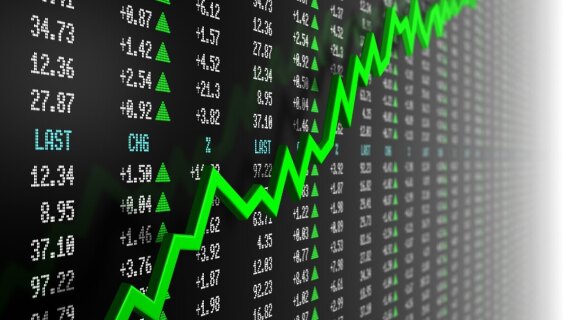The midterm elections are mercifully over. Looking at the results from a bottom-line perspective, things went as expected: Democrats took the House, Republicans retained control of the Senate. Wall Street doesn’t like surprises—it prefers when things go according to plan. And that’s part of why stocks were up more than 2% on Wednesday. The question now: Is a longer midterm election rally imminent?
Perhaps. Or it could simply be due to the bulls taking control again after a rough October for the market. Or it could be a matter of seasonality kicking in—November, after all, marks an end to the market’s six-month “Sell In May” period, and the beginning of the two best investing months on the calendar.
But don’t discount the effect of the midterms being behind us. Since 1934, stocks have gained an average of 2.7% in the eight trading days surrounding (five days before, three days after) midterm elections, according to the esteemed Stock Trader’s Almanac. Interestingly, the October that precedes the midterm election tends to be bearish, like this year’s.
“So many bear markets seem to occur in midterm years, very often bottoming in October,” the Almanac says. … “Perhaps the opportunity for investors to make a change for the better by casting their votes translates into an inner bullish feeling before and after midterm elections.”
Indeed, a change was made, as Republicans have lost complete control of Congress. That said, there was something for everyone in this election—President Trump instantly claimed victory for his party after it managed to not only retain Senate control, but add a couple seats (exact results are still pending for two races that are too close to call). So, investors who were hoping for change got what they wanted, while those who prefer the status quo got it in the Senate.
Numbers Support Midterm Election Rally
Back to the market, can the midterm election rally last longer than eight days? History also says yes. Since 1950, the S&P 500 gains an average of 2.7% in November during midterm years, better than the index’s usual 1.5% November gains. In December, the average gains in a midterm election year are 1.9%, slightly ahead of the 1.7% average December gain.
Want more recent evidence of a midterm election rally? Let’s look at the post-election returns following this decade’s previous midterms, in 2002, 2006, 2010 and 2014. Note: These returns are in the S&P 500, starting from five trading days before the election to factor in the full midterm bump discussed earlier.
2002: -0.067%
2006: +3.7%
2010: +6.1%
2014: +3.7%
Even with the slightly down November-December period after the 2002 midterm elections, that’s an average gain of 3.2% in the S&P 500. Granted, that trails the historic average November-December gain of 4.6% in midterm election years. But it’s in line with the average returns for a normal November-December period—which, again, are the two best months on the investment calendar.
With stocks already up more than 4% in the last six trading days, another midterm election rally could be underway. Yes, it could just be coincidence after the October market correction. But as the Almanac said, market bottoms in October are quite common in midterm election years.
Ultimately, the charts are what really matter. Those will truly tell us whether the correction is behind us or not. And while the coast isn’t clear yet, things are trending in the right direction.
And an upward trending stock market is something supporters of both parties can get behind.

Sign up now!

Sign up now!

Sign up now!

Sign up now!
